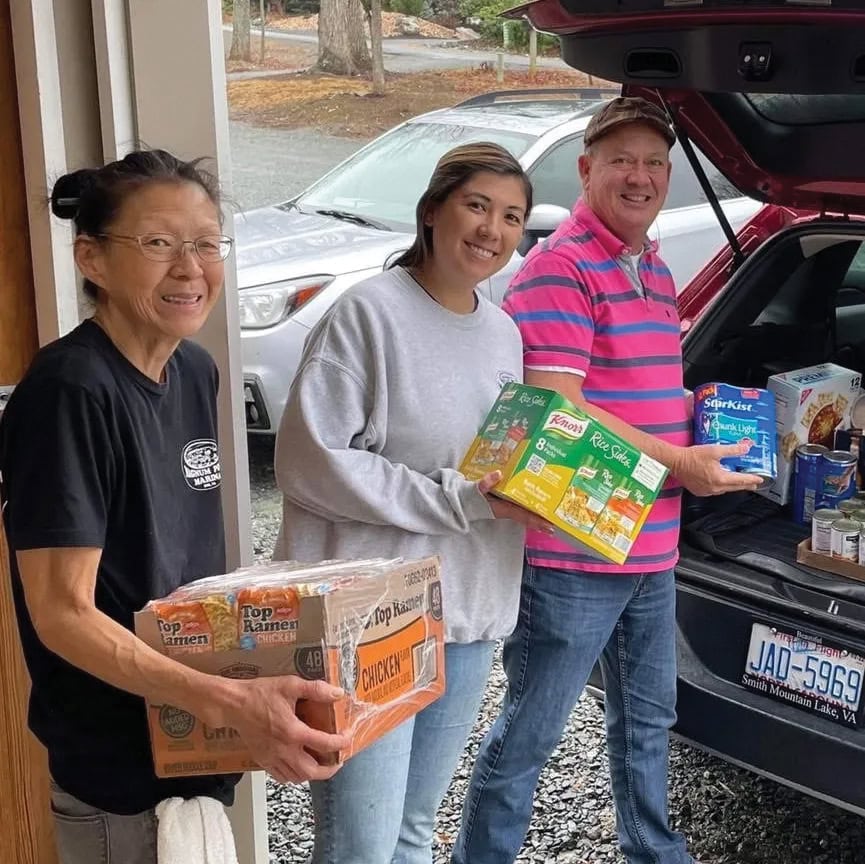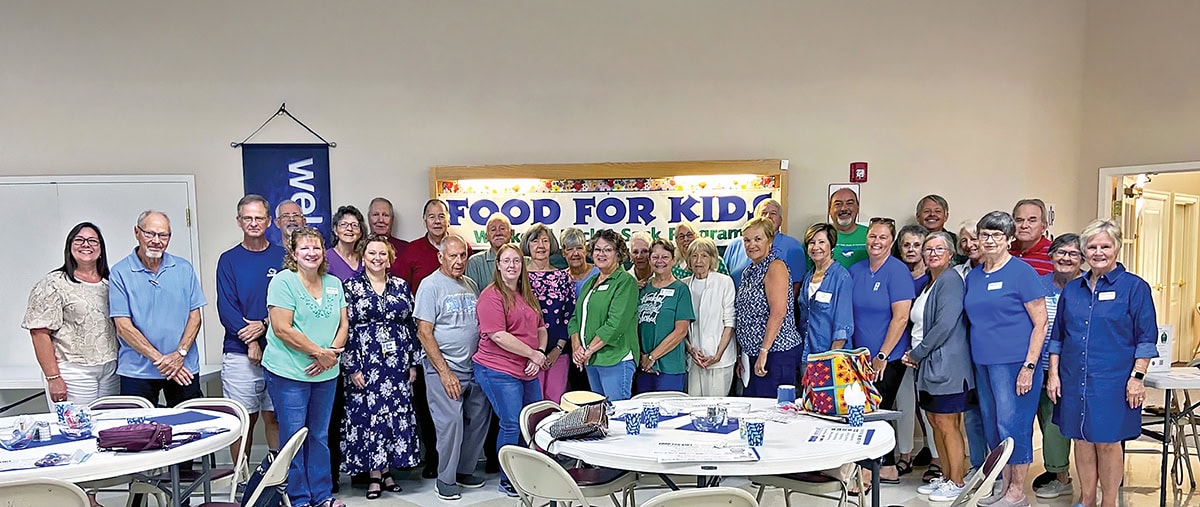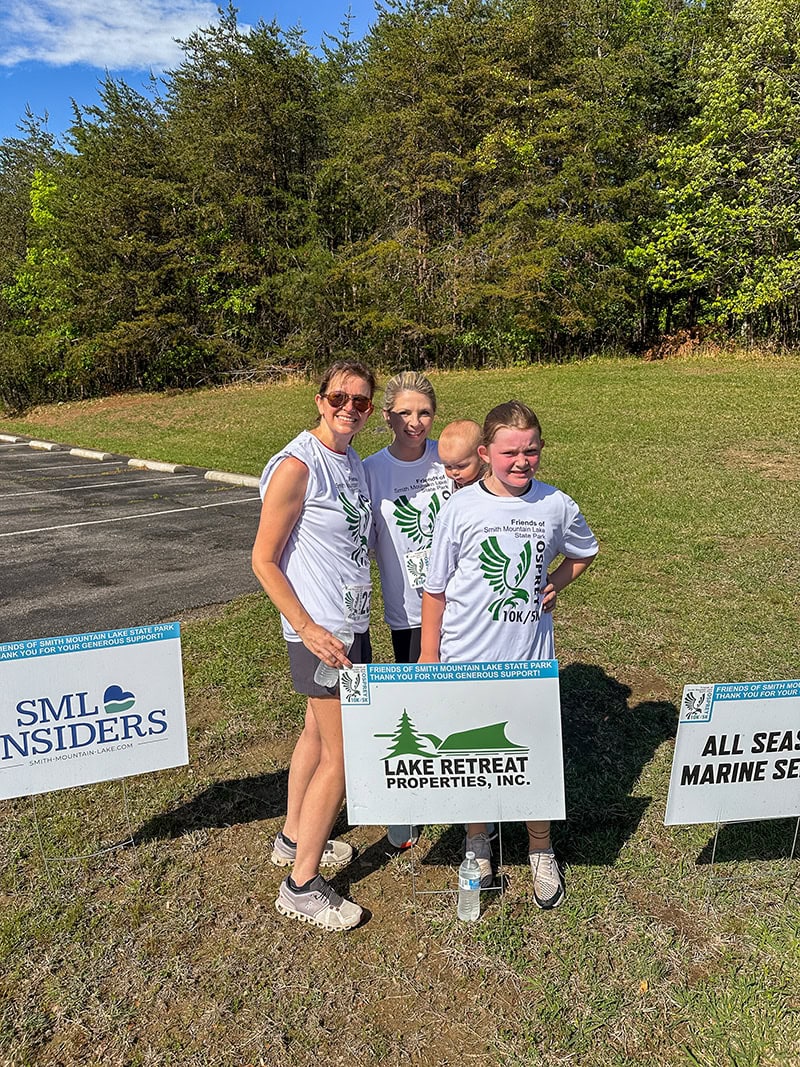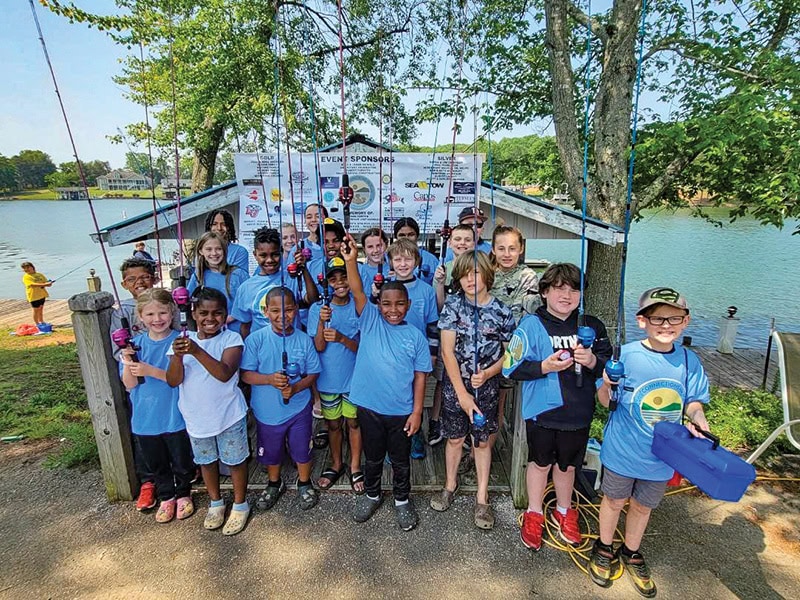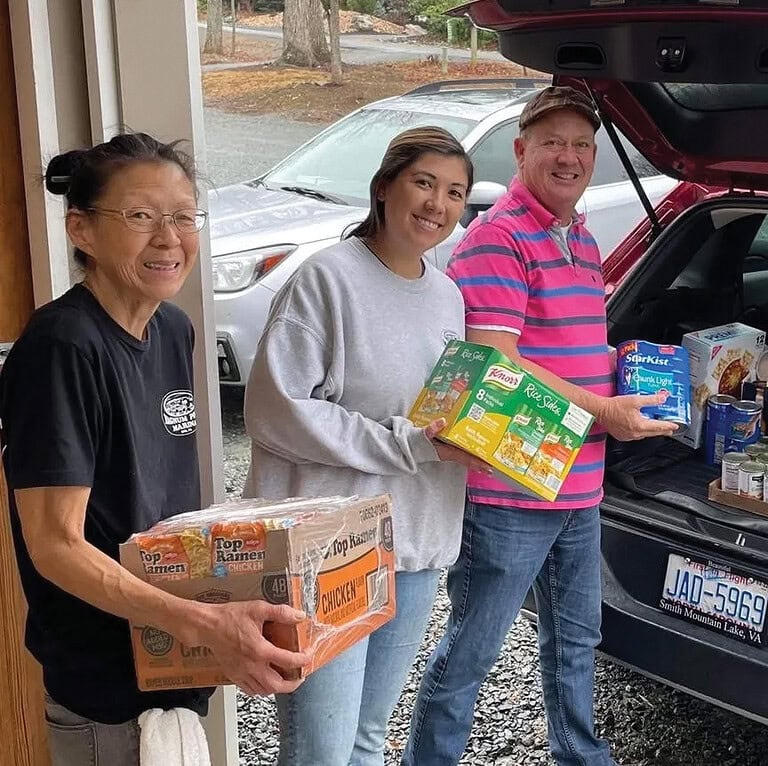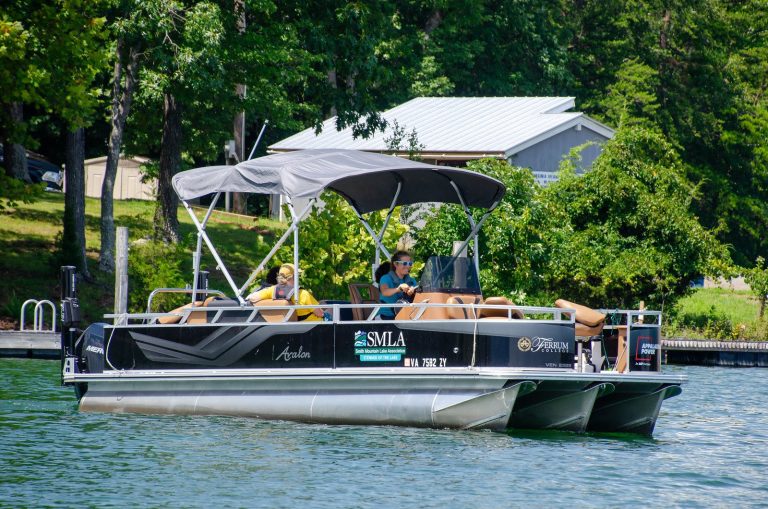SMLA Lake Days Provide Hands-On Learning for Students
This page may contain affiliate links. If you click and purchase, we may earn a small commission at no extra cost to you. Read our full disclosure policy.
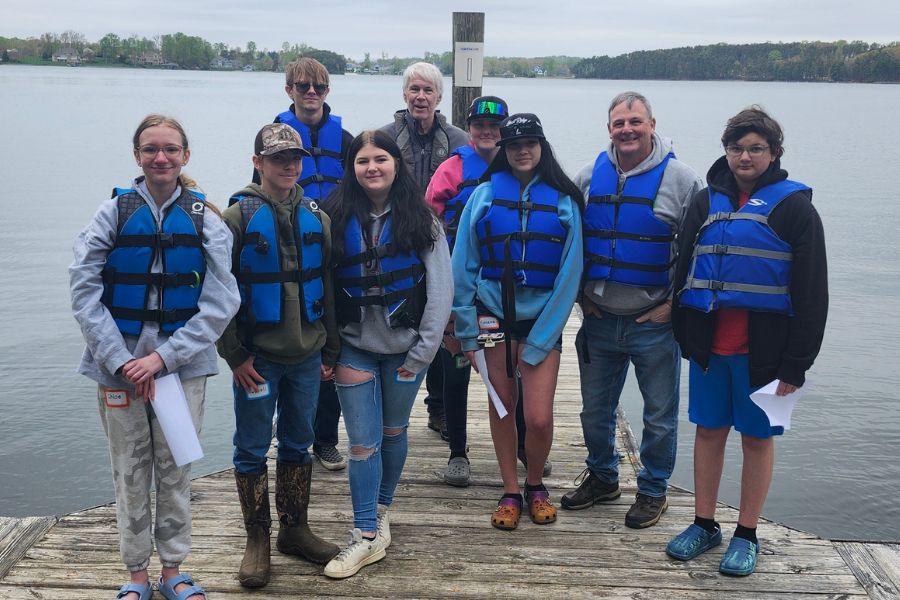
Allison Kappler, K-12 Supervisor of Science and Computer Science for Bedford County Public Schools (BCPS) was looking for hands-on science options for students when she reached out to Smith Mountain Lake Association (SMLA). That started a collaboration that culminated with Lake Days held at Smith Mountain Lake State Park.
During four days in April, about 230 ninth grade environmental science students from Jefferson Forest High School, Liberty High School, and Staunton River High School learned about the factors that support a clean and healthy lake.
“The students explored the lake watershed, what it takes to maintain a healthy ecosystem, and their connection to SML,” Kappler said.
Leading the effort for SMLA was education chair Vicky Wuerfel, who has more than 15 years of experience as an educator in both Franklin County Public Schools and Fairfax County Public Schools. To develop the program, she tapped the expertise of SMLA scientific professionals and experts.
“The event provided field experiences for students at minimal cost to the school system,” Wuerfel said. “Lake Days was funded by SMLA donors, members and business partners.”
Field Experience Makes Science Real
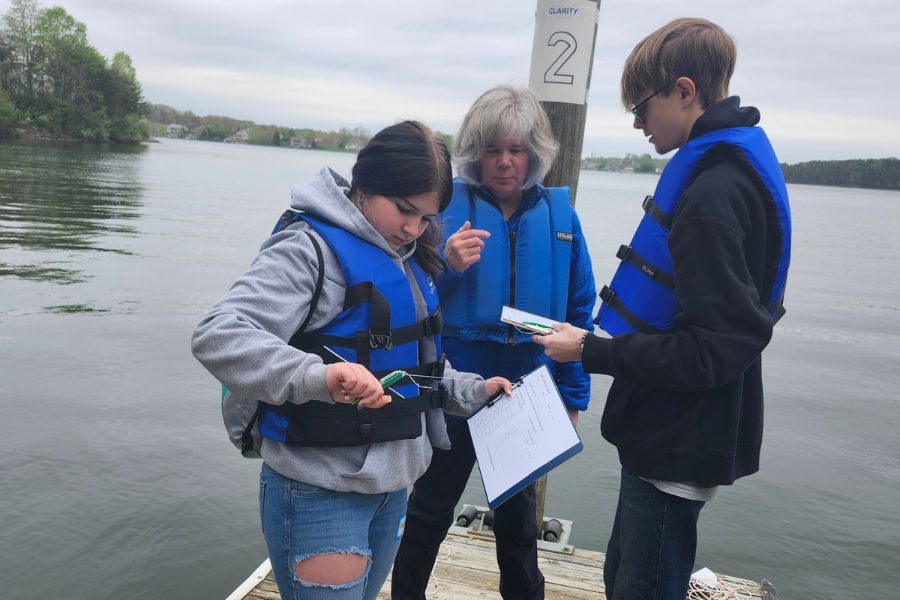
The initial idea was to model the program for BCPS after the Creek Week program already in existence with Franklin County Public Schools. During Creek Week, sixth graders explore local streams for macroinvertebrates. They learn about their pollution tolerance or intolerance, which helps them then understand stream health.
Kappler was aiming for a program for ninth grade environmental science students and wanted to offer a full-day dedicated to hands-on science. So, she and Wuerfel explored how to expand the Creek Week concept.
A group of former educators and SMLA scientific experts developed a hydropower station to mimic the SML dam and a dock program to collect temperature and clarity data for analysis.
The next hurdle was locating a stream for use for hands-on analysis. The answer was found at the SML State Park. Ranger Jeanette (Jet) Lawler, Park Program Interpreter, welcomed the program and coordinated the days of learning on the park property. Additionally, Ranger Jet provided the final activity for the program, an exploration of the area’s local watersheds and ecosystems.
From “Eww” to “Wow”
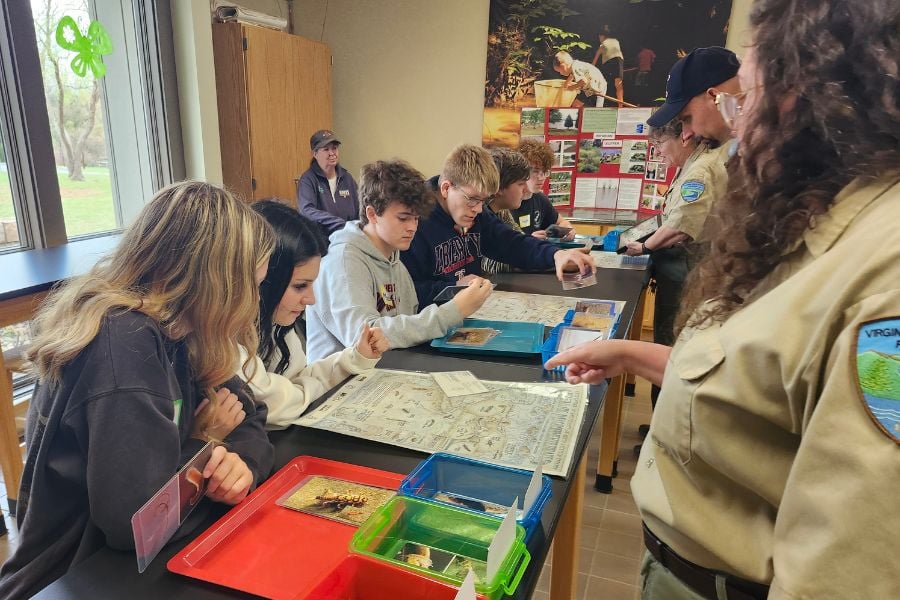
Many students started being creeped out by the photos of the various macroinvertebrates that they could expect to see in their time in the stream. Just hours later, the same students were remarking about the cool critters they uncovered at the stream.
The stream station was developed and led by Geoff Orth, SMLA Save Our Streams chair and an active member of the Blue Ridge Foothills and Lakes (BRFAL) Chapter of Virginia Master Naturalists. Many of the volunteers for Lake Days were also BRFAL volunteers.
“It was fun seeing the kids getting dirty and seeing first hand why the bugs in the creek matter,” said Allen Hackmann, Oceanography & Environmental Science teacher at Jefferson Forest High School.
Many students really started to understand water clarity as they worked Secchi disks at the park’s dock. They also enjoyed taking measurements of the lake water temperature. This part of the day was led by Tom Hardy, SMLA Water Quality Monitoring program chair, and Mary Colligan, SMLA Dock Watch program chair.
There were many aha moments at the hydropower station when students learned about the role the dam and the lake play in the generation of electricity for Bedford County.
Stream Work Is a Highlight
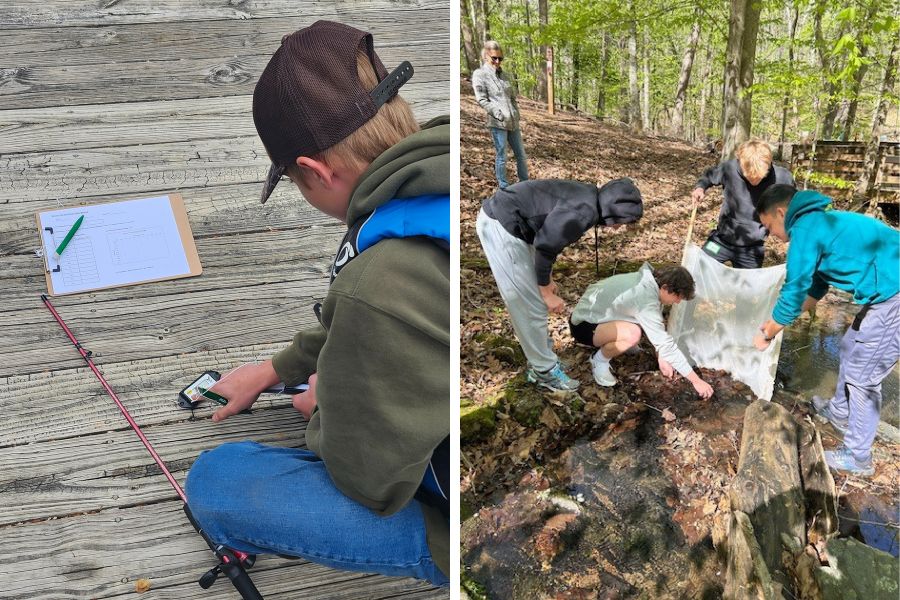
The day for the students culminated in a stream. Using the same techniques as SMLA Save Our Streams (SOS) program volunteers, they did hands-on work in Buck Run stream.
The students collected freshwater aquatic macroinvertebrates, the critters that live on the bottom of a stream. The macroinvertebrates found were then classified as pollution-tolerant or pollution-intolerant, and the relative balance between those two categories determined how healthy the water is in the stream.
Connie Hylton, a SOS volunteer and former biology teacher, helped the students collect samples and identify what they found.
“I believe in the importance of students being exposed to nature by actually getting out and experiencing the natural environment,” Hylton shared. “Of course, working with youth is always an adventure, but it is an opportunity to be exposed to youthful thinking and youthful energy.”
Most of the students were excited for the opportunity to be outdoors. The volunteers hoped to create interest in further explorations in their educational experiences.
Volunteers Witness Transformations
When the students arrived, many were a bit squeamish in the wet lab looking at the various critters they would later find in the stream. However, it didn’t take them long to start relaxing and really start engaging with the activities.
“Often, as the activities ended, the kids would be drawn to the lakefront. What’s better than seeing these kids having fun and being drawn like a magnet to the beautiful lake,” Wuerfel said.
The event impacted the adult volunteers as well. Susan Heyroth, a retired elementary school teacher, called Lake Days a meaningful volunteer opportunity where she learned some things, too..
Heyroth observed, “It was very cool to see a group of retired professionals interacting with a much younger generation to teach them about the lake and see the passion that we have for keeping our lake beautiful, clean, accessible to all, and healthy for generations to come.”

Jill Kurtz
guest author
Jill serves on the Board of Directors for the Smith Mountain Lake Association, where she chairs the communication committee. With a career in public relations and marketing, she’s focused on connecting businesses with their communities. In her free time, you’ll find her throwing balls into the lake for her three retrievers.
